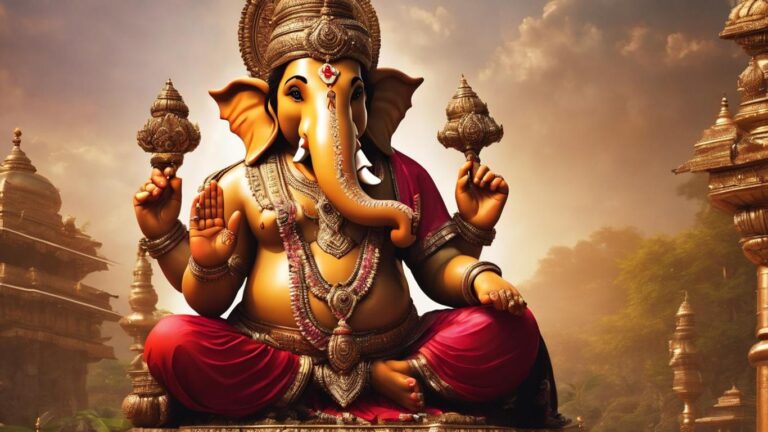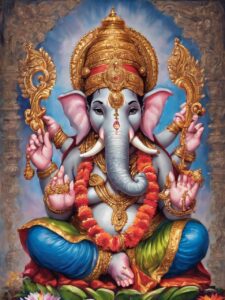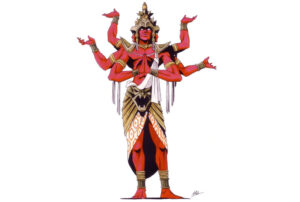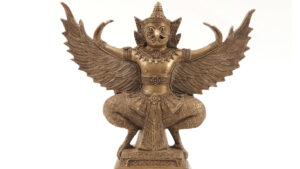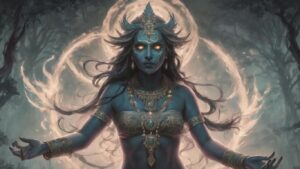Table of Contents
Worshippers widely venerate and revere Ganesha in Hinduism. Ganesha, spelled as Ganesh or Ganesa, possesses an elephant head and a human body. He holds the titles of the remover of obstacles, patron of arts and sciences, and deva of intellect and wisdom.
Origins
In Hindu mythology, Parvati, Shiva’s consort, crafts Ganesha from her divine substance. Guarding her chamber, Ganesha follows her orders strictly. Unaware of Ganesha, Shiva, returning home, faces conflict at the chamber entrance. In some versions, Ganesha’s lack of recognition triggers the conflict; in others, it’s a test by Parvati. Amidst the conflict, Shiva beheads Ganesha using various weapons, such as his trident or a sword. Witnessing her son’s beheading, Parvati is grief-stricken and devastated. In response, Shiva promises Ganesha’s restoration, instructing his followers, the ganas, to find a living being’s head. The first they encounter is an elephant. Shiva attaches the elephant’s head to Ganesha’s body, reviving him. This transformative act signifies Ganesha’s emergence as a deity with an elephant head, embodying wisdom, strength, and the ability to conquer obstacles.
Appearance
Ganesha’s appearance is distinctive and rich in symbolism. His elephant head signifies wisdom and intelligence. With large ears, Ganesha emphasizes the importance of listening and gaining knowledge. One broken tusk on Ganesha is a symbol of sacrifice, signifying the willingness to give up valuables for others’ benefit. His potbelly represents contentment and the ability to digest life’s ups and downs. Ganesha’s four arms hold diverse objects, such as a goad for removing obstacles and a noose to capture difficulties.
The modak in his hand symbolizes the rewards of spiritual pursuits. The single tusk signifies the unity of existence and the pursuit of ultimate truth. Accompanied by a rat or mouse, Ganesha demonstrates control over desires and the ability to overcome obstacles. The crescent moon on his forehead symbolizes the passage of time and the lunar cycle. These diverse elements collectively contribute to Ganesha’s rich iconography. Artists may emphasize different aspects, resulting in varied depictions. Ganesha holds a revered status in Hinduism, known as the remover of obstacles and the patron of intellect and wisdom.
Family
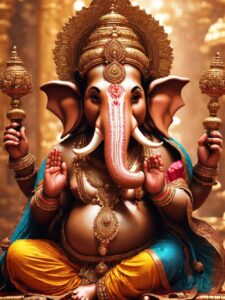
In the Hindu trinity, Ganesha belongs to the “Parvati-Shiva-Ganesha” family. Shiva, the principal deity, serves as Ganesha’s father. Known as the destroyer, Shiva is part of the Trimurti alongside Brahma and Vishnu. Parvati, the mother, is the goddess of love and fertility. She embodies Shakti, the divine feminine energy. Ganesha’s brother, Kartikeya, is the god of war and wisdom.
Created by Parvati, both brothers share diverse legends of camaraderie and rivalry. While some traditions mention other siblings, Ganesha and Kartikeya are most commonly referenced. Additionally, Nandi, the bull, is revered as part of Shiva’s divine family, serving as his devoted mount. This family dynamic, rich in mythology, underscores the interconnected roles of creation, preservation, and destruction within Hindu cosmology.
